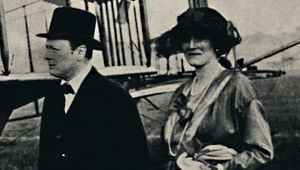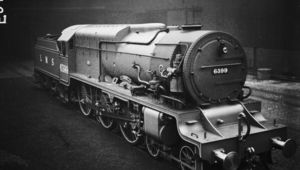
The work was hard, dirty, dangerous and often deadly
For more than 150 years, from the mid-1800s, the steep, narrow valleys of South Wales were a booming source of arguably the world’s highest quality steam coal. Hard Welsh anthracite burned with little smoke.
Coal has been wrested from the Welsh earth for centuries. It wasn’t until the middle of the 19th century, however, that large scale production became feasible—with mechanization to bring the coal from deep pits to the surface, and trams and railroads to transport the black gold down the valleys to the ports of Cardiff and Newport.
Spreading out fanwise to the north above those ports, the Valleys filled up with pit heads, winding engines and bleak housing terraces that crawled up the hillsides. By 1913, Cardiff was the largest coal exporting port in the world. At that point, there were 620 mines in the South Wales coalfield, and more than 230,000 men and boys working the collieries. Welsh steam coal was highly in demand, fueling the dreadnoughts and cruisers of the mighty British navy and that of its Empire allies into the Great War.
From the villages and the countryside across Wales and far beyond, people flocked to the Valleys and their seemingly prosperous mining towns, lured from the hard-scrabble life of subsistence farming to a hard-scrabble life in the mines—that at least offered cash pay, chapels, pubs and a sense of community.
The work was hard, dirty, dangerous and often deadly. At the collieries, life was cheap indeed. Mine safety was always a concern, but accidents were common. Death, mutilation and lung disease were omnipresent realities in the towns lining the valleys and following the coal seams. In practice, it was more difficult and expensive for a mine owner to replace a pit pony than a miner.
At the head of the small Aber Valley, rising some six miles above the market town of Caerphilly, the village of Senghenydd still remembers that it suffered even more than most.
The twin shafts of the Universal Colliery, named York and Lancaster, were sunk in 1891. As the shafts reached a depth of nearly 2,000 feet, it became evident that there were rich coal seams indeed to be mined. Senghenydd became something of a boom town over the next few years as colliers, builders and railroad workers turned the sleepy little farming hamlet into a bustling mining community of several thousand. Those who built the terraced row houses and the railroads stayed on to work the mines. Just down the road, the Windsor Colliery in neighboring Abertridwr completed the transformation of Aber Valley.
Senghenydd’s first disaster struck in the early morning on May 24, 1901. At the end of the night shift, when many men had been brought to the surface, three explosions in quick succession rocked the still dawn. The pits were dry, hot and heavy with coal dust; all it took was a spark. A quick count in the lamp room showed that 82 men were still in the mine. Only one survived. Eleven days later there were still 120 men working around the clock to recover the bodies, clear the falls and restore working operations. The explosion left 57 widows and 230 fatherless children. Alas, the tragedy proved merely a rehearsal.
Following the 1901 explosion at Senghenydd, the Coal Mines Act of 1911 provided a number of regulations for mine safety, including control of electrical equipment, watering down the ever-present coal dust and providing reversible fans to pump clean air into the mines. Unfortunately, all these measures hadn’t been implemented at the Universal Colliery by the autumn of 1913.
On the morning of October 14, 1913, shortly after the 950 men on the morning shift had descended the pit, a horrendous blast sent the two-ton cage rocketing skyward, destroying the pithead. Fire and explosion swiftly spread through the districts of the West side of the mine. Dreaded methane gas fueled the conflagration, though the exact cause of the explosion was never determined.
Though the narrative has been fully told and carefully recorded, it is difficult to imagine the immediate aftermath of that morning blast. From the East side of the mine, the men were brought safely to the surface. Those working the larger districts to the West, however, were doomed to rock falls, fire and suffocation. Along the dingy terraced blocks of Senghenydd and Abertridwr, women lost their fathers and their brothers, their husbands and their sons.
The fires underground were still raging six days later, when the official death toll was stated to be 439. More than 30 bodies had yet to be recovered. The Universal Colliery explosion remains the worst mining disaster in British history, and one of the worst ever in the world. This time, the toll included 205 widowed women, 542 children left without fathers and 62 dependent parents bereft. Senghenydd’s grief can not be fathomed.
There was no money in the Aber Valley, and no burial ground in its shallow soil. Coffins were hand carried by their comrades more than four miles up the mountain above Abertridwr to the churchyard of Eglwysilan. Six surviving miners bore each body, while six filed behind in relief. The graveyard could not contain them all, and another ground was opened in Penyrheol on the outskirts of Caerphilly. They lie in both cemeteries, row on row.
Today the mine shafts have been filled and capped; colliery buildings have been cleared away or adapted to other uses. The Nant-y-parc primary school sits on the site of the Universal pit head. Just outside its gates, a poignant memorial remembers what is often known simply as the Senghenydd Explosion.
At the village hall, a Heritage Room, open to the public and staffed by volunteers, tells the story of Britain’s greatest mining disaster. I visited there with 89-year-old Penry Evans, whose memories of the explosion’s aftermath are fresh.
As he has for years, Evans sits on “the Committee” that guards the memory and commemorations of the Senghenydd Explosion. They are already preparing to remember the centenary of the disaster in 2013, but Evans is concerned for the future. “It’s so difficult to find young people who want to take an interest,” he laments. “They’re all too busy with television and video games. On the committee, we’re all old. Who’s going to remember when we’re gone?”
Across the street at the Aber and Senghenydd Ex-Servicemen’s Club, the second floor is the club room and rehearsal hall of the Aber Valley Male Voice Choir—one of the best in Wales. Wednesdays and Sundays, the men drift in to rehearse, picking up their pints of beer at the bar on their way upstairs. Every year at a memorial service the choir sings the beautiful lament written to commemorate Senghenydd’s tragedies: “Rest, Sad Heart, Rest.”
This night I sat in to sing with them:
Thanks be to God for roses red
For skies of blue and sunshine fair
For every gift I raise a prayer:
Thanks be to God.
To Remember the Valley

This monument remembers those whose remains could not be identified.
Caerphilly is a fine base for a visit to Senghenydd, with many lodging and dining options (as well as the largest castle in Wales). Follow the B4263 north into the Aber Valley. In addition to Senghenydd, visit the memorial in Abertridwr to the scores of men who perished over the years at the Windsor Colliery.





Comments